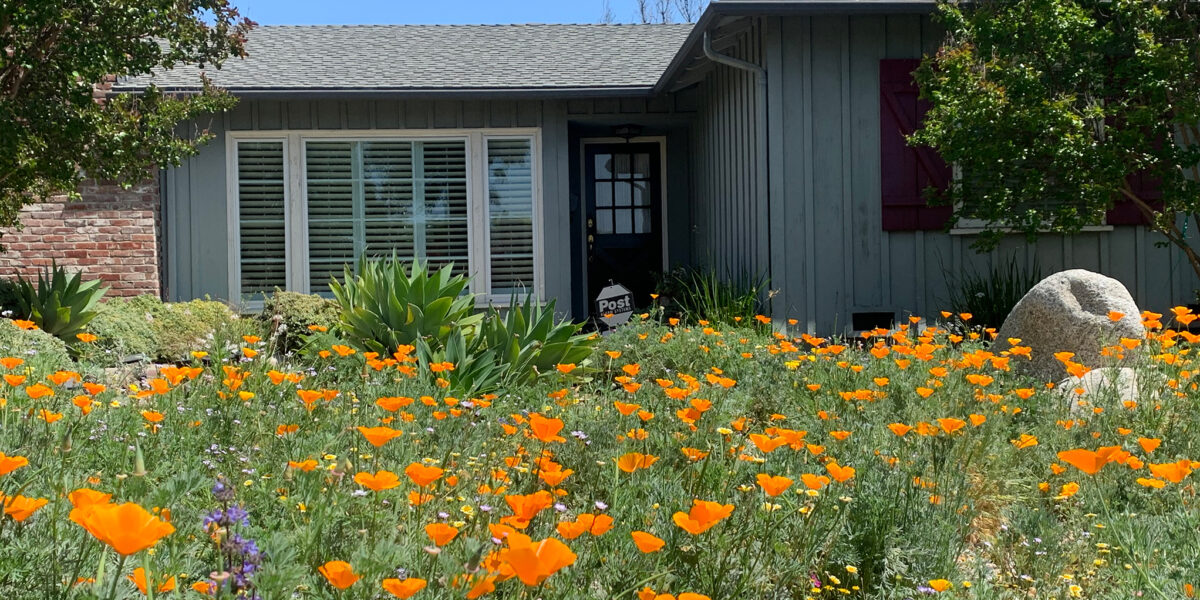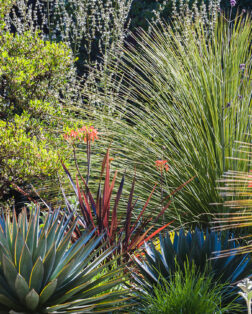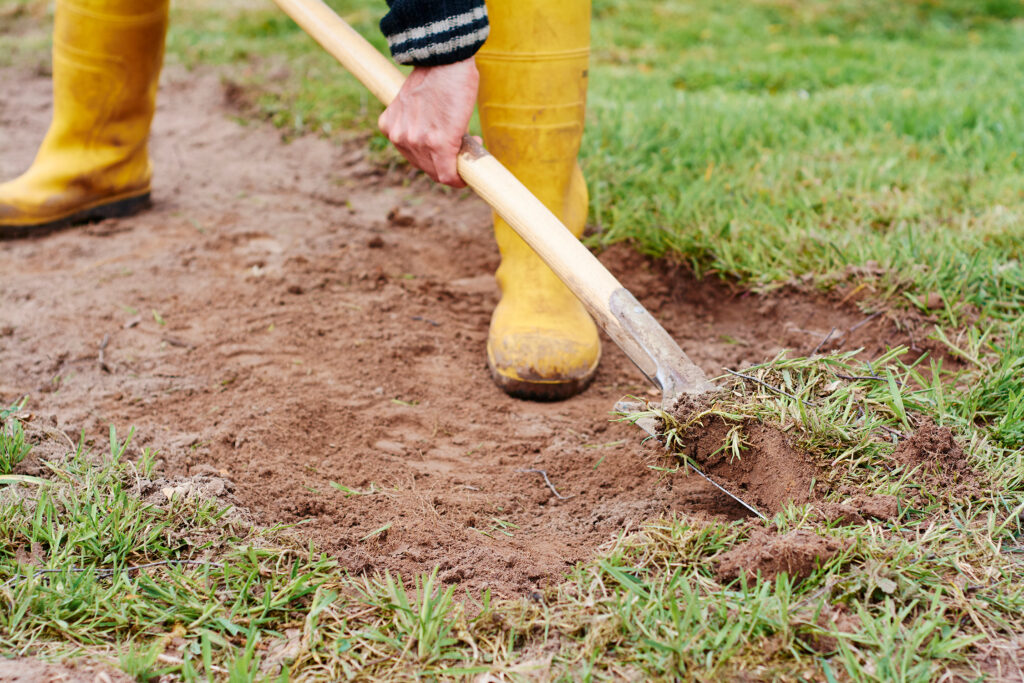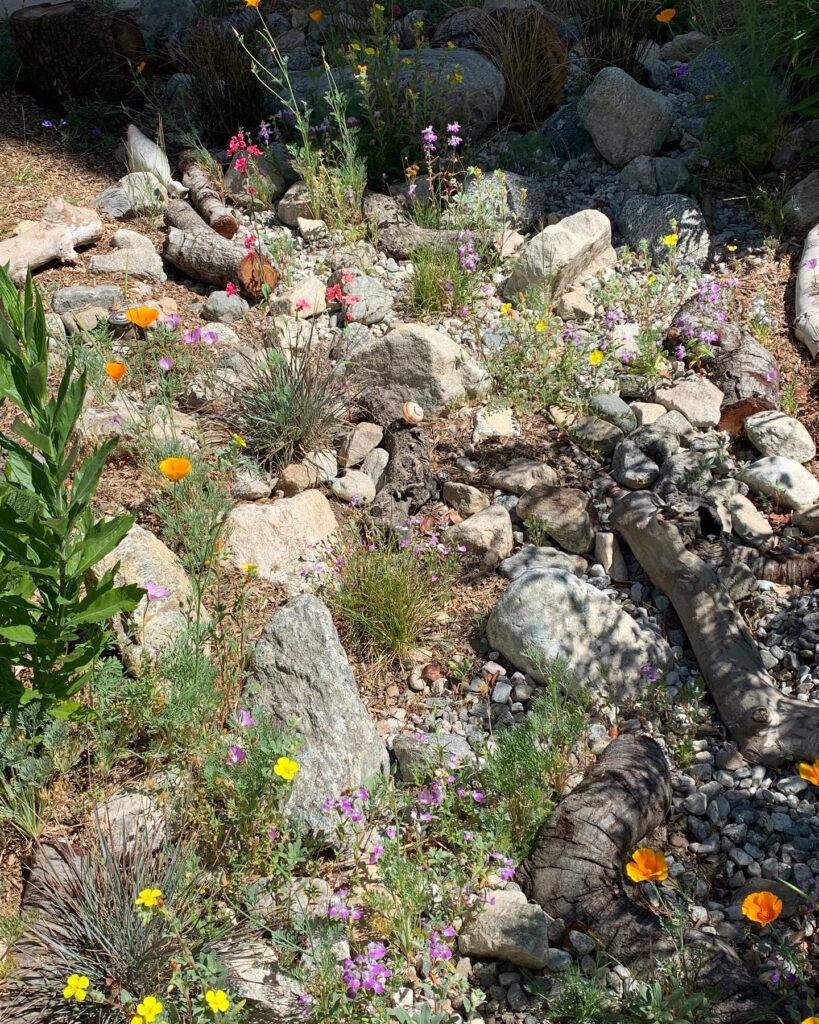
This Is the Quickest Way to Get Rid of Your Lawn (and Yes, You Should Do It Now)
It’s time to terminate that turf.

This article is part of our 8-week, limited edition newsletter series, The Low-Water Gardening Guide, where we walk you through what it takes to create a sustainable garden, from swapping in the appropriate plants to new irrigation methods to the tools you’ll need and more. Sign up here to get each installment straight to your inbox.
Perhaps one of the most important projects when focusing on low-water landscaping, lawn removal has become somewhat of an anthem for sustainability—but why are some people still not doing it? Sure the task might seem overwhelming and grass tends to pop up in all the wrong places, so it’s understandable why the idea of permanently removing a larger section feels daunting. The key to success is to go into the project with a plan and we’ve got all the tips to help you towards sod removal success.

The Low-Water Gardening Guide
If you've been looking for new ways to save water in your garden, or want to redo it entirely, let this be the year you make it happen. Our 8-week newsletter series can show you how. Click the button below to subscribe!
We connected with Los Angeles-based native nursery owner and garden designer Parker Davis of Hardy Californians, who not only drives a truck that says “Kill Your Lawn” but lives and breathes those words by turning lawns into water-wise sanctuaries across Southern California. From the three key methods of removal, to considerations and planning before you even purchase those new plants, let’s get you inspired to turn off those sprinklers and never look back.
How to Remove Grass
Plan and Prep
Have a plan! Mapping out the steps you’re going to take, the methods you’d like to try, and the timeline involved will help you stay on track. Just take action and start! Since a few of these removal processes take time, don’t get held up on design dilemmas or plant orders until the grass removal is in action.
If you’re feeling overwhelmed, Parker encourages you to hire a designer or take some classes to spark inspiration. In some parts of the West there really is no bad time of the year to plant, so he encourages you to “just go ahead and get started. Don’t wait, just plan well and go for it.”
It turns out every season is a good season for lawn removal and we couldn’t agree more!

Westend61/Getty Images
Removal Methods to Try
Physical Removal/Sod Cutting
The quickest way to terminate your turf is with physical removal. Whether the shovel or a sod cutter is your preferred tool of choice, just know that lingering roots (especially if dealing with Bermuda grass) will make a spirited return if not tended to. Parker clued us in that muscle power is his go-to on removal projects “usually using pickaxes and shovels, then sheet mulching” for additional root termination and soil rejuvenation.
Sheet Mulching
Finally a good use for all those cardboard delivery boxes! Sheet mulching (also known as lasagna layering) is the process of layering compost and cardboard over the existing lawn, which in turn kills grass and creates a rich nutrient-dense soil for future plantings. Keep in mind that slow and steady wins this race; the process can take up to six months to completely break down in dryer climates.
No cardboard? No problem, you can also do this technique using newspaper and mulch. Just be sure you’re sourcing mulch from a reputable source. Parker warns that “you don’t want to import any harmful pathogens or pests to your new garden. Use properly aged mulch from reputable sources. It’s not expensive, so to me the peace of mind is worth paying for versus getting a random chip drop.”
While you can start sheet mulching any time of the year, months with more natural moisture have a tendency to speed up the breakdown process. When laying down your cardboard, Parker suggests overlapping at least 18 inches at the edges, and to use a thick layer (think 4-6 inches) of natural mulch. Quality coverage is incredibly important here, not only to keep sunlight from encouraging grass growth but to save you the frustration of having to revisit said growth after all your efforts.
For more information on the ratio of materials, The California Native Plant Society has a very simple breakdown to get you started.
Solarizing
Some like it hot… but not your lawn. This quicker, but equally effective smothering process can be achieved in as little as six weeks given the proper conditions. Clear plastic tarps are laid over the lawn, in turn intensifying temperatures and ultimately killing everything (including pesky rhizomes and seeds). Parker advises that solarization is a great first step if you’re starting in the summer, but don’t worry about it if you’re thinking of starting a removal in fall/winter/spring.
Where a faster fix is tempting, do keep in mind this process can also destroy beneficial soil life, so amending and reactivating your soil health will be an additional process added to your to-dos before planting.

Courtesy of Hardy Californians
Post-Removal Maintenance Tips
While all the above methods are excellent ways to remove grass, weeds will be weeds and there will likely be some after-growth. Parker suggests staying on top of it and that “diligent weeding during the first few months is a must!” Additionally, preparing soil for future plantings is a great idea and he encourages that “it can be worth giving your soil a good drink of compost tea to help revitalize the microbial life.”
With the lawn removal complete, or even if it’s still a work in progress, now is the exciting time to start making your low-water oasis a plant-filled reality. Parker suggests it’s worth designing the new garden specifically to outcompete the weeds and turf which will attempt a comeback. Focus on plants with aggressive rhizomes or ground covers and plant them densely.
Read the Current Issue Here!
Get one year of Sunset—and all kinds of bonuses—for just $24.95. Subscribe now!
